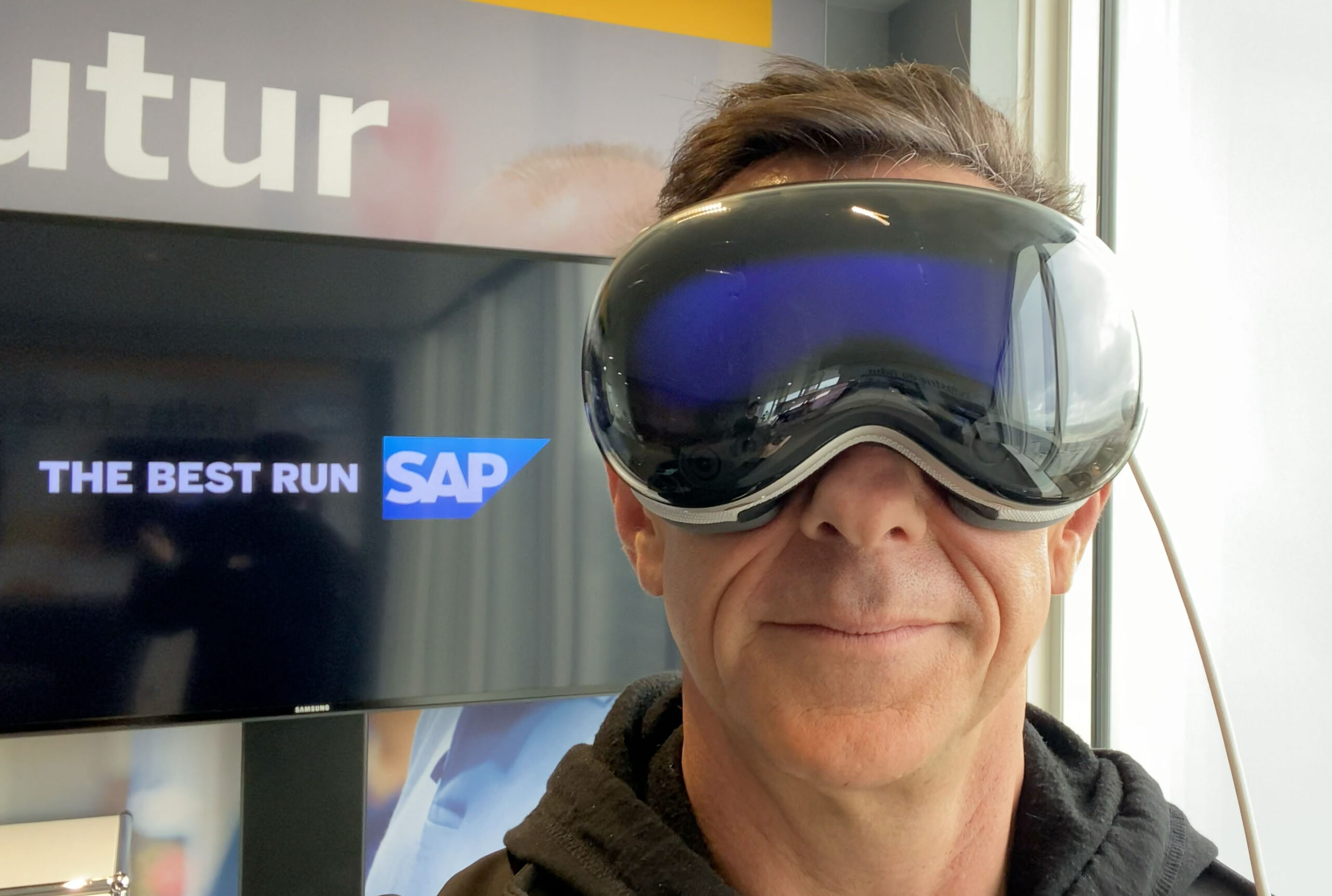I got a chance to try out the Apple Vision Pro at the SAP Paris office yesterday (a real honor, since it’s not going to be commercially available in France until much later this year). Many thanks to Jerome Conin, part of the SAP Mobile Experience team which is working to get the most out of this technology in work environments.
SAP and Apple are close partners (we use a lot of Apple products and Apple uses SAP Business Technology Platform for innovation among other things) and so our developers had early access to the platform and two SAP applications were already available at the launch (SAP Mobile Start and SAP Analytics Cloud), with more on the way.
SAP has been working with customers on the uses of spatial computing at work for a long time, in areas such as augmented reality for technicians (showing virtual plans and procedures in the air next to the machine to be fixed) and warehouse stock-picking.
But I’ve been skeptical about wider use of these technologies in business, mainly because we’ve been talking about it for a long time and not much has come of it.
And more recently all of the publicity around Meta’s vision of the Metaverse did nothing to change my mind—I have zero interest in attending legless avatar meetings or shopping experiences.
My views changed somewhat last year when I saw a great presentation by Oliver Gutzeit, the leader of SAP’s Global Experience Technology Unit.

Oliver’s presentation, demos, and wide variety of use-cases helped convince me that the technology was maturing to the point where it was becoming really useful. Here’s one of his slides from the AFSUG user conference last year:

The term “Metaverse” seems to have fallen by the wayside, and Apple’s spatial computing term seems to be winning — a recent SAP Labs Talk episode interviewed Oliver on the topic.
A big part of my skepticism has been because of the limits of existing technology and the form factor. Now that I’ve tried the Apple Vision Pro, I think things might be changing faster than I realized.
The Apple Vision Pro was very easy to use: It only took me about 30 seconds to get the hang of the new interface techniques, and the “passthrough” vision of the outside world works amazingly well. I more or less forgot I was wearing it almost as soon as I put it on (but didn’t wear it for very long).
Adoption will start with entertainment and games (the spatial videos look amazing), but as the gear gets cheaper, lighter, more powerful, and more AI-enhanced, I can see why this could be an exciting part of the future of work.
While it was impressive, I don’t think I’d use the device much in its current form, even if I were willing to shell out all that money (although the idea of sitting comfortably on a plane or train and being able to work comfortably on a big virtual screen does have some appeal).
I might change my mind when I get to try out Apple’s new more depth-aware spatial video recordings which apparently give you the immersive feeling of being there. But personally I think I’ll probably be coming to spatial computing from the other side, with regular glasses that have been enhanced with cameras, audio, and AI chat functionality, like the Meta Rayban smart glasses or the new Frame glasses.
In the meantime, the SAP IT and innovation teams (and some lucky very senior executives) will be in the front lines of experimentation, sharing what we’ve learned, and increasing the range of SAP applications available.
And if you do have an Apple Vision Pro (or are thinking about getting one for your own corporate innovation center!) here are some links to more examples and screenshots of what you can do with SAP & Apple Vision Pro, and expect more in the near future!
SAP and Apple Partnership
SAP Apple Vision Pro and SAP BTP
SAP Mobile Start on Apple Vision Pro
